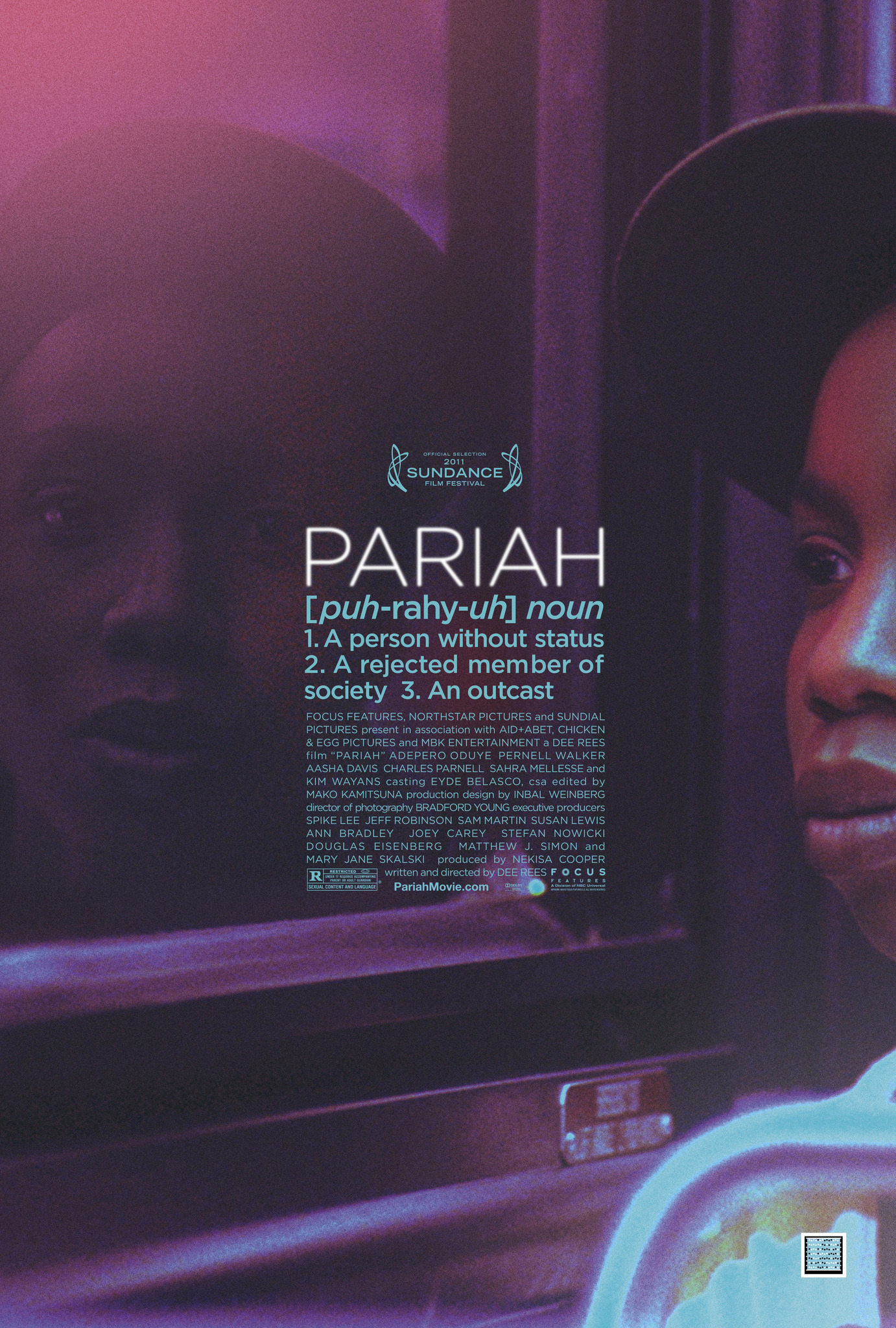Pariah (2011)

| |
| Directed by | Dee Rees |
|---|---|
| Running time | 1h 26m |
| Core concepts this week |
Black queer liberation plot the erotic as power |
| View on Amazon Prime | |
Film background
Pariah is a drama directed by Dee Rees, who has described the film as semi-autobiographical. Pariah was Rees’ first narrative feature film. Following Pariah, Rees went on to direct Bessie (2015), Mudbound (2017), and episodes of television shows including Empire and Philip K. Dick’s Electric Dreams.
Plot summary
Pariah follows Alike (Adepero Oduye), a 17-year old Black lesbian who is growing up in Brooklyn, New York. She lives with her mother, Audrey (Kim Wayans), her father, Arthur (Charles Parnell), and her younger sister, Sharonda (Sahra Mellesse). Alike is in the process of coming to terms with her sexuality, but is not out to her parents at the start of the film. While her mother expects Alike to wear feminine clothing, she often wears more masculine clothes at school and when she is out with her friends and changes before returning home. Alike primarily spends time with her best friend, Laura (Pernell Walker), who is out, and who lives with her sister, presumably after being kicked out of the house by her mother. Audrey appears concerned about Alike’s friendship with Laura, and encourages her to spend time with the daughter of a friend of hers from church, Bina (Aasha Davis). While Alike initially resists this friendship, she and Bina develop a close bond and eventually sleep together. However, after they have sex, Bina rejects Alike, and claims that what occurred between them wasn’t meaningful and no one needs to know about it. Alike is heartbroken. She returns home and overhears her parents fighting. Alike intervenes in the fight and comes out to her parents. Audrey violently attacks her, and Alike leaves home to stay with Laura. While she reconciles with her father, her mother is unable to express love for her. She applies to an early college program at UC Berkeley and is accepted, leaving her past behind.
Content warnings
Pariah contains discussion of sexuality, including a scene that takes place at a strip club, and references to off-screen sex. There is also a scene in which Audrey beats Alike.
Materials for this week
- Lesson plans [Word doc]
- Screening Quiz [Word doc]
- Unit Response Essay Prompt [Word doc]
- Secondary readings:
- Day 2: Roach, Shoniqua. “Unpacking Pariah: Maternal Figuration, Erotic Articulation, and the Black Queer Liberation Plot.” Signs: Journal of Women in Culture and Society, vol. 45, no. 1, 2019, pp. 201-225. [Excerpts provided: 201-202; 206-210; 215-222. If you would like to cut this excerpt further, I recommend cutting the middle excerpt.] [pdf]
- Day 2: Raphael-Hernandez, Heike. “I am not running, I am choosing:” Black Feminist Empowerment and the Continuation of the a Literary Tradition in Julie Dash’s Daughters of the Dust (1991) and Dee Rees’ Pariah (2011).” Ostrava Journal of English Philology, vol. 6, no. 2, 2014, pp. 7-18. [Excerpt provided: p. 16-17] [pdf]
- Day 3: Lorde, Audre. “Uses of the Erotic: The Erotic as Power.” Sexualities and Communication in Everyday Life, edited by Karen E. Lovaas and Mercilee M. Jenkins, Sage Publications, 2006, pp. 87-91. [pdf]